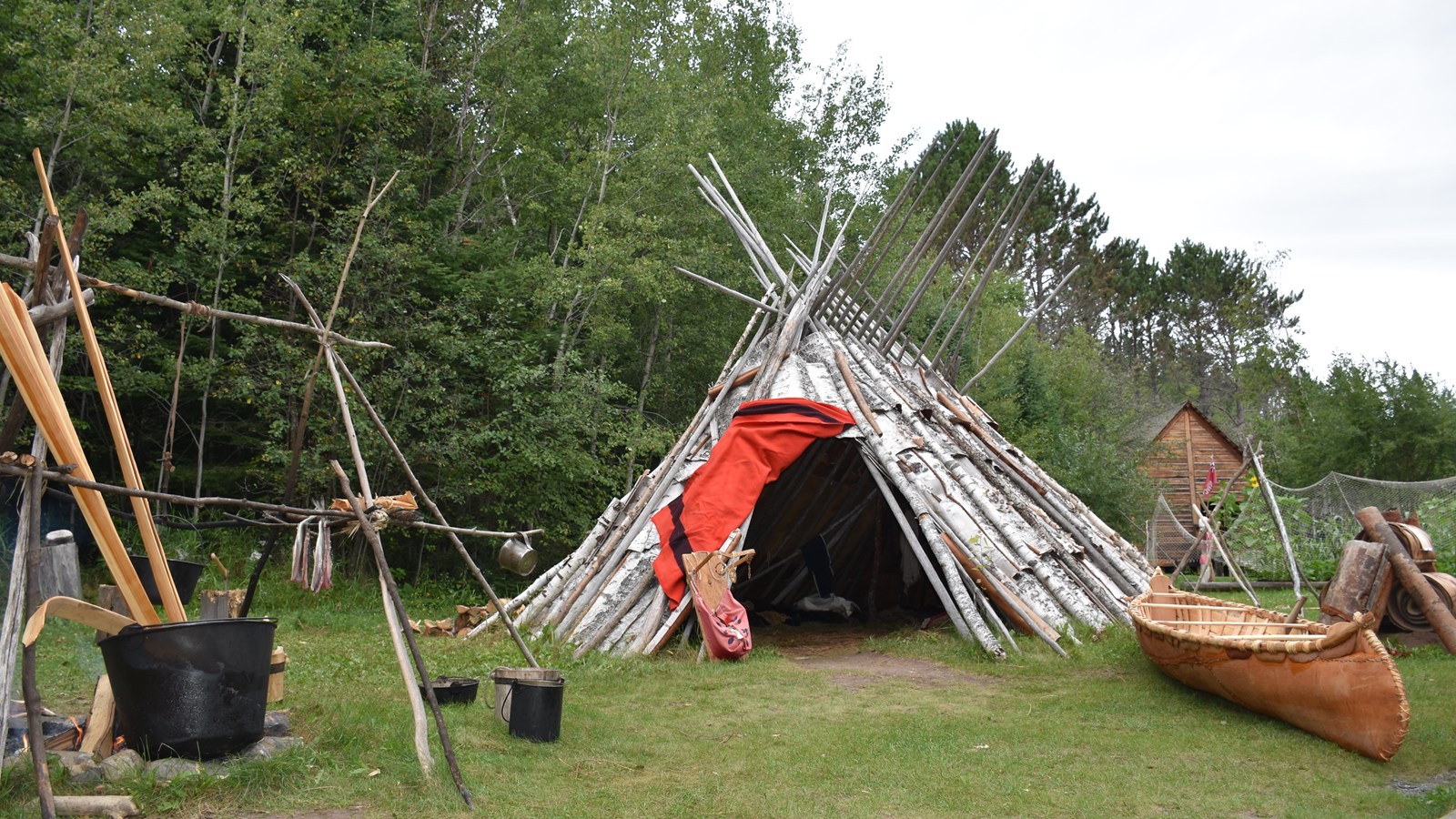Last updated: December 7, 2024
Place
Anishinaabe Oodena (Ojibwe Village) Re-creation

NPS photo
Benches/Seating, Historical/Interpretive Information/Exhibits, Information - Ranger/Staff Member Present, Restroom - Accessible, Scenic View/Photo Spot, Tactile Exhibit
Anishinaabe Cultural Activities
This re-creation of a small village at the NWCo Depot exemplifies the economic partnership between the Anishinaabe (Ojibwe) and the Northwest Company. Living history interpreters demonstrate seasonal crafts and several types of birchbark homes. These may include building a bark canoe and bark basketry, processing wild rice, boiling maple syrup, tanning hides, finger-weaving, drying, cooking and smoking fish, and growing heirloom vegetables in the Three Sisters garden.
Familiar Location
Fur traders constructed their posts near Native villages for survival and convenience. By the 1760s, a summer rendezvous was already a well-established tradition on Grand Portage Bay. As well as trade, activities included socializing, marriage, ceremonies, dancing, and music. Perhaps 1,000 or more Native peoples (Anishinaabeg Ojibwe, Cree, and Assiniboine) gathered or visited the Bay during the summer.
Long Habitation
Archeological investigations during the early 1960s revealed Native habitation in the Grand Portage Bay area at least 2,000 years ago. Lithics or stone artifacts such as notched projectile points, two small end scrapers, an oval blade knife, chert and small flakes of native copper were discovered in two areas close to Grand Portage Bay. The artifacts were located just above a post-glacial lake beach pre-dating Lake Superior. Point styles and beach dates connect the sites to the late Archaic and early Woodland periods 4,000-2,100 years ago (ca. 2,000 B.C.-100 A.D.).
